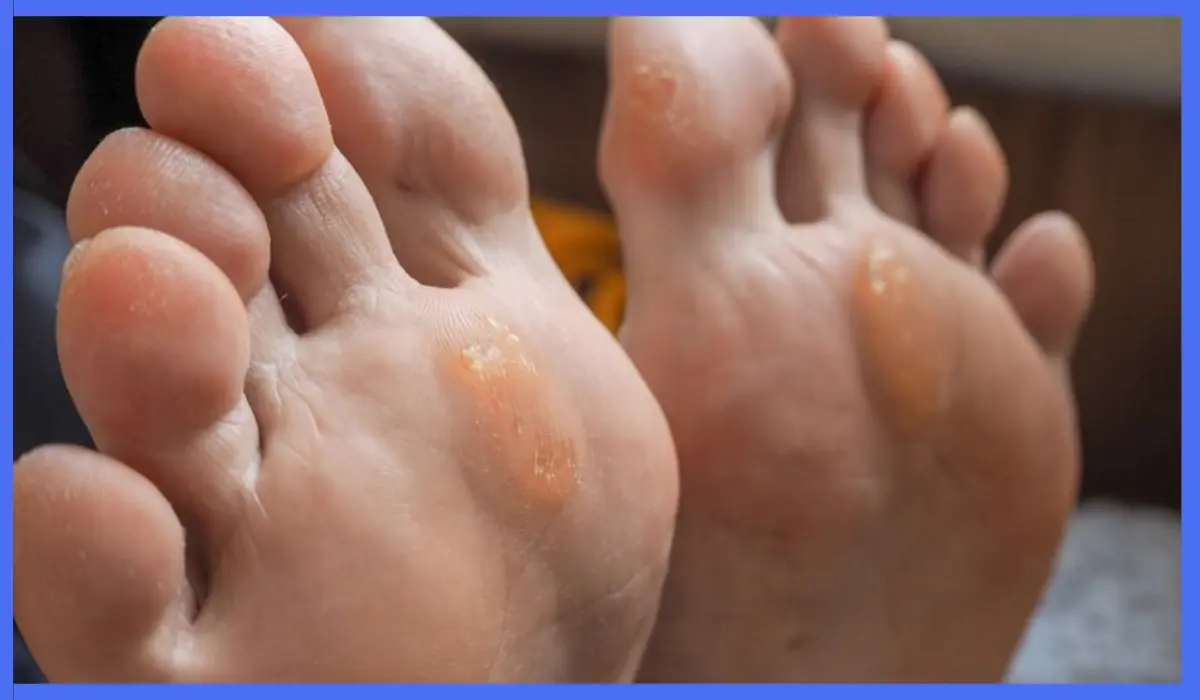What Does Foot Fungus Look Like? Identifying The Signs And Symptoms!
Learn to recognize the signs and symptoms of foot fungus with this comprehensive guide. Discover what foot fungus looks like, from discoloration and thickened nails to itching and peeling skin. Understanding these indicators is crucial for timely treatment and prevention. Equip yourself with the knowledge to identify foot fungus early, ensuring prompt action for healthier, happier feet.

Disclaimer: This article has been generated with the assistance of AI tools. While our research team has fact-checked the content, readers should independently verify information for accuracy and reliability.
Foot fungus, or tinea pedis, is a common condition that can affect people of all ages. It is caused by a group of fungi called dermatophytes, which thrive in warm and moist environments, such as sweaty shoes and damp socks. While foot fungus may seem like a minor annoyance, it can lead to more serious complications if left untreated.
Recognizing the signs and symptoms of foot fungus is crucial for seeking proper treatment and preventing its spread. In this article, we’ll explore what foot fungus looks like and the various manifestations it can take.

Athlete’s Foot (Tinea Pedis)
Athlete’s foot is one of the most common forms of foot fungus. It typically appears as a red, scaly rash between the toes or on the soles of the feet. The affected areas may also feel itchy, burning, or stinging. In severe cases, the skin can become cracked, blistered, or oozing.
Toenail Fungus (Onychomycosis)
Toenail fungus is another common manifestation of foot fungus. It often starts as a yellow or white discoloration at the tip of the toenail, gradually spreading and causing the nail to thicken, crumble, or become brittle. In some cases, the nail may develop white or yellow streaks, and the nail bed may appear chalky or discolored.
Moccasin Foot
Moccasin foot is a less common form of foot fungus that primarily affects the soles and heels. It presents thick, scaly, and cracked skin, resembling the appearance of a moccasin shoe. The affected areas may also become itchy, red, or painful.
Interdigital Tinea (Toe Web Infection)
Interdigital tinea, or toe web infection, occurs in the spaces between the toes. It appears as a red, scaly, and often macerated (softened) rash that can be accompanied by itching, burning, or cracking of the skin.
Vesicular Tinea (Blistering)
In some cases, foot fungus can manifest as small, fluid-filled blisters or vesicles. These blisters may appear on the soles, heels, or between the toes, and can be itchy or painful.
Check More: Top 10 Essential Oils For Toenail Fungus And How To Use Them?
Complicated Infections
In individuals with weakened immune systems or underlying conditions like diabetes, foot fungus can lead to more severe and complicated infections. These may involve secondary bacterial infections, cellulitis (skin infection), or systemic infections if left untreated.
Identifying foot fungus can be challenging, as the symptoms can sometimes mimic other conditions, such as eczema, psoriasis, or contact dermatitis. However, some key characteristics can help distinguish foot fungus from other skin issues:
- Location: Foot fungus typically affects the toes, soles, heels, and web spaces between the toes.
- Appearance: Scaly, cracked, or discolored skin and nails are common signs of foot fungus.
- Odor: Some types of foot fungus can produce an unpleasant, musty odor.
- Persistence: Foot fungus tends to be persistent and may recur if not treated properly.
If you suspect you have foot fungus, it’s essential to seek medical attention from a podiatrist or dermatologist. They can perform diagnostic tests, such as skin scrapings or nail clippings, to confirm the presence of fungal infection and recommend appropriate treatment options.
Treating foot fungus is crucial not only for alleviating symptoms but also for preventing its spread to other parts of the body or other individuals. Antifungal medications, both topical and oral, are commonly prescribed to combat the fungal infection. In some cases, debridement (removal of affected nails or skin) may be necessary for severe cases.
Prevention is also key in avoiding foot fungus. Practicing good foot hygiene, such as keeping feet clean and dry, wearing breathable socks and shoes, and alternating footwear can help reduce the risk of fungal infections. Additionally, avoiding walking barefoot in damp public areas, like locker rooms or swimming pools, can minimize exposure to fungi.
Related: Toothpaste For Toenail Fungus: Does It Really Work?
Bottom Line
Foot fungus can present in various forms, from athlete’s foot to toenail fungus, moccasin foot, and more. Recognizing the signs and symptoms, such as scaly, discolored, or cracked skin and nails, is crucial for seeking proper treatment and preventing further complications. If you suspect you have foot fungus, don’t hesitate to consult a healthcare professional for an accurate diagnosis and effective treatment plan.

Lisa Miller
Dr. Lisa Miller is a board-certified Dermatologist with over 15 years of experience treating a wide range of skin, hair, and nail conditions. She received her medical degree from the prestigious Columbia University College of Physicians and Surgeons and completed her dermatology residency at the University of California, San Francisco, one of the top dermatology training programs in the country. Dr. Miller is an active member of the American Academy of Dermatology and has authored numerous peer-reviewed articles and book chapters on the latest advancements in dermatological care. She is frequently invited to speak at national and international medical conferences, sharing her expertise with other clinicians. In her private practice, Dr. Miller takes a patient-centered approach, collaborating closely with each individual to develop customized treatment plans. She is passionate about empowering her patients to achieve optimal skin, hair, and nail health through a combination of the latest medical therapies and lifestyle recommendations.
